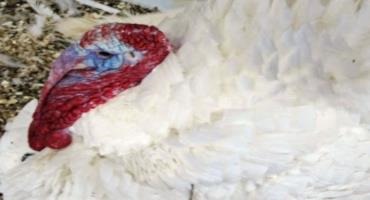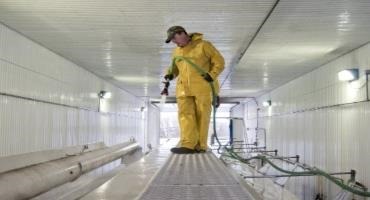In the past few weeks, several wild ducks killed by hunters in the southeastern United States have tested positive for H5N1 avian influenza. Cases have also been confirmed in eastern Canada.
Despite the fact that those cases are far from Minnesota, a state official said they are an early warning for Minnesota poultry producers ahead of the spring waterfowl migration.
"With the number of detections that they're picking up in essentially healthy wild birds, we know that it's circulating and that it's going to be present in those populations,” said Minnesota Board of Animal Health senior veterinarian Shauna Voss. “I think it's not a matter of if it comes to Minnesota — it's when."
According to the U.S. Department of Agriculture, the virus is a strain of Eurasian H5 avian influenza. An outbreak of avian influenza has been spreading across Europe.
For many in the poultry industry, this scenario is uncomfortably similar to 2015, when about 9 million birds in Minnesota and 50 million across the country were killed by the virus, or euthanized in an effort to slow the spread of the disease.

A tom turkey on a Minnesota farm Dan Gunderson | MPR News file
In late 2014, the avian influenza first showed up in the northwestern U.S., in wild birds.
By early March of 2015, Minnesota confirmed the first case in a turkey flock.
After the outbreak, the USDA reported the virus caused a drop in egg and turkey production and higher prices for consumers.
When a highly pathogenic H5N1 virus arrives in Minnesota, it's most likely to show up first in what the industry considers a high-risk area, Stearns, Kandiyohi and Meeker counties, where a large number of turkeys are produced in close proximity to lakes and wetlands that attract wild waterfowl.
"Producers in the high-risk area are scared,” said Jill Nezworski, a poultry veterinarian in Buffalo Lake and a Minnesota Turkey Growers Association board member.
"In 2015, that [outbreak] caused so much of a financial hardship that they were left nearly bankrupt. You know, these folks clawed their way out of that financial pit, and they certainly don't want to go back there," she said.
Poultry farmers are much better prepared for avian influenza now than they were in 2015, Nezworski said.
"Prior to 2015 we were so naïve as to how fast a disease like [avian influenza] can spread,” she said. “Most people now have firsthand experience and don't want to go through that again. So, we have pretty good compliance here in Minnesota."
The Minnesota Board of Animal Health is auditing those biosecurity plans, and Voss said implementing the plan is key.

A worker washing a feed truck in an effort to stop the virus from spreading during the 2015 avian influenza outbreak. Jackson Forderer for MPR News 2015
"Now is the time to pull our biosecurity plan off the shelf and review it. Make sure that all your protocols are up to date, and make sure everybody's trained on it and following it to a tee," said Voss.
Biosecurity efforts include limiting access to farms, having workers change shoes and outer clothing and sanitizing hands before entering a barn as well as sanitizing any equipment brought into the barn.
“I’m telling poultry producers and poultry owners to be prepared for spring. Nothing's inevitable, but I give it pretty good odds,” said University of Minnesota poultry expert Carol Cardona about the chance for an avian influenza outbreak in Minnesota.
Cardona said waiting to act until an influenza case is found in Minnesota is not an option.
“As soon as those birds start to arrive in Minnesota, our producers have to assume they have highly pathogenic AI, so we can't allow them to wait until there’s a case,” said Cardona, the Pomeroy Chair in Avian Health for the College of Veterinary Medicine at the U.
The USDA is expected to expand its surveillance program to look for infected wild birds in the Midwest.
According to the state Agriculture Department, Minnesota has about 550 commercial turkey operations and more than 3,000 poultry farms. In the 2015 outbreak, 110 farms were affected. Most were turkey growers, but the virus also hit some large chicken flocks.
Click here to see more...